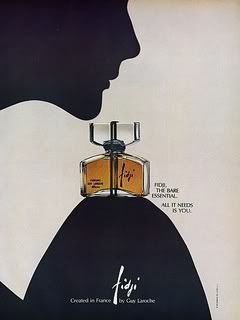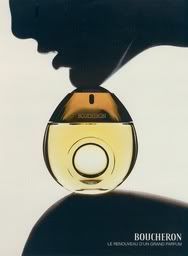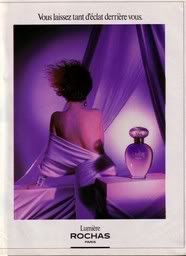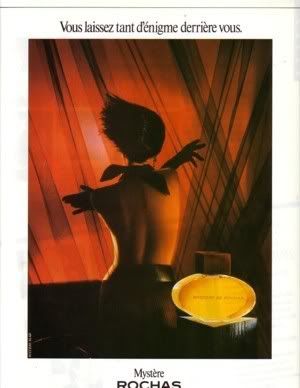
Diorama, unlike its cohorts in divinity who have lapsed from Heaven, was recently re-issued (along with Diorling) by Roja Dove to results that do not insult its precious, beautiful visage of a classical Venus de Milo.
Luca Turin has been reported to pan the jus circulating at the Avenue Montaigne shop in comparison to the vintage -which one would assume he got procured by the miraculous and forbidable Mme Pillaud in Menton:
"It was real Diorama, a one-ounce tester, the first postwar Dior perfume, not the crap you you buy today for two hundred dollars on avenue Montaigne that bears no resemblance to the original fragrance." (Chandler Burr, "Emperor of Scent" 2003, p.19)
I have alas only dried up dregs of my glamorous, Paris-shopping grandmother's mini vial to compare to the reissued version which I sampled recently {click to learn how}, but if the reissue is any miniscule indication of the greatness of the original, then by God, I would have been blinded with awe.
According to perfumer Jean Claude Ellena, talking about Diorama :
"No perfume has ever had more complex form and formula, more feminine contours, more sensual, more carnal. It seduces us with its spicy notes: pepper, clove, cinnamon, nutmeg, cumin, the scent of skin. It is disturbing with its animalic notes: castoreum, civet, musk. All the accords and themes to follow are contained in this perfume: the wood and the violet, the plum and the peach, the jasmine and the spices"(author's translation).
Diorama is a chypre of classical structure poised between Femme and Mitsouko and rounding out the best features of both, while it could also be argued that it contains the sperms of calm and restrained fruity exploration that will be expressed in Parfum de Thèrese and Diorella. Unfortunately for me, Parfum de Thèrese soon acquires a metallic aqueous aspect that I find disagreeable, so perhaps I might not be the best judge of such a comparison. The idea however had been suggested to me by good friend Denyse Beaulieu and I think it's worth exploring if you get the chance to have both at hand.
The bergamot top note of Diorama allied to spicy notes of nutmeg, cinnamon and cardamom recall the spice caravan that leads the camels of Eau d'Hermès, another Roudnitska creation, but also the cinnamon bite of Mitsouko that contributes to its spicy woodiness. Cumin was explored as a sweaty note addition to the re-issue of Femme (under Olivier Cresp's baguette) and contibutes a lot to its carnality, which I personally find very pleasurable. In Diorama, cumin is apparently held in check and other elements of more animalic nature are sensed in the depths of the scent, very slowly.

Diorama has the rare power to obliterate anything you might project visually and transport the one who smells it into a better place, a better time. Its clear, incadescent heart of jasmine which I feel emerge after the first ten minutes projects warmly in a radius that encompasses everyone that will lean a little bit closer. It is a jasmine that is rich, ardent and indeed beautiful. Despite what notes are given, as I lean on my wrists pondering on the beauty of such a smell I perceive a clear lily of the valley note, an aroma that is usually replicated by hydroxicitronellal, as lily of the valley/muguet is a flower whose smell is elusive. (It is well known that Roudnitska grew the heady flowers to study them in order to replicate their divine smell in Diorissimo). That note gives an unexpected freshness, like the one that will surface in Diorella along with hesperidic and peachy touches later on and here marries well with jasmine and another white floral of a greener, piquant aspect.
You can't really distinguinsh when the mossy aspects of vetiver, moss and patchouli enter the scene like dramatic actors in a Shakesperean Midsummer Night's Dream, but when they do along with erotic undertones of labdanum and the leathery odour of animalic castoreum you know they will stay on the skin for hours mesmerising you.
All the themes evolve and revolve one into the other, like "a dream within a dream". You could say that Diorama was the seminal work of Roudnitska that contains his profound ideas on perfume aesthetics to be later dissected and minutely examined in his prolific career.
The lasting power is phenomenal for an eau de toilette concentration (at least on my skin) and in this regard it is excellent value for money.
Diorama, the way I perceive it, smells opulent and quite old-fashioned: the way real women smelled all those years ago, the way my glamorous grandmother smelled, when the hysteria of artificial freshness hadn't surged and people actually dressed for dinner even if by themselves at home. I know, it sounds such a weird concept to our modern ears...However if you have ever got into a satin little slipdress in cerulean blue and got the escargots and Cristalle from the fridge to celebrate by yourself, instead of munching Oreos wearing flannel bear-printed pyjamas, you know what I mean. In short, Diorama is a retrospective. But so much worth it...
Available in the classic 125 ml bottle of eau de toilette.
Boutique Dior is located at 28-30 Avenue Montaigne, 75008 Paris.
Fax number to order: 00 33 1 40 73 57 95
Also available at Le Bon Marché (in Paris) and at Harrods (at Roja Dove's Haute Parfumerie) in London.

.jpg)
 Isabelle Rousseau, director of public relations for Guerlain confirms that the defunct masculine scent Coriolan , a scent of juniper berry bitterness coupled with balsamic notes and an immortelle drydown, will be reissued in Les Parisiennes collection (125 ml "bee" bottles) starting from January 2008 under a new name. The bottles in Les Parisiennes normally cost 140 €. {see a list of them and reviews
Isabelle Rousseau, director of public relations for Guerlain confirms that the defunct masculine scent Coriolan , a scent of juniper berry bitterness coupled with balsamic notes and an immortelle drydown, will be reissued in Les Parisiennes collection (125 ml "bee" bottles) starting from January 2008 under a new name. The bottles in Les Parisiennes normally cost 140 €. {see a list of them and reviews 





.jpg)




